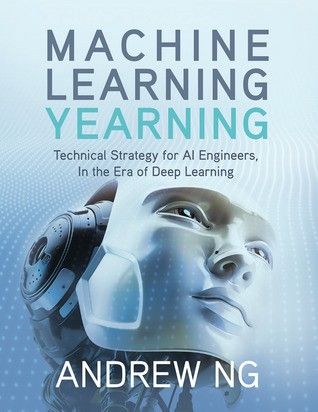The Only Book You Need to Ace Advanced Machine Learning Strategy
Spoiler: It’s an Andrew Ng masterpiece and is free.

“If you only read the books that everyone else is reading, you can only think what everyone else is thinking.” — Haruki Murakami.
If you’re starting in data science, this article isn’t probably for you. I still love you and wrote about the 3 beginner-friendly data science books you should read, which many beginners loved. I suggest you save this story for later.
But what if you’ve been in the field for quite long enough? What if that you seek more knowledge beyond the beginner level? What if you want to fast-track yourself to become a leader in AI?
I hear you. I had similar aspirations. When I finally took senior positions in data science, I was tasked with owning the project's directions. Executing the project is one thing, but strategizing and creating solutions for the problem, is a different game.
“Technical Strategy” is one of the least discussed topics in AI. It is probably because few people in the industry have sufficient experience and credibility to talk about it.
If we want to stand out from the crowd, we need to go beyond the crowd. In other words, when we see someone like Andrew Ng teach “Technical Strategy for AI Engineers,” — we should learn it.
Machine Learning Yearning by Andrew Ng

Andrew Ng has pioneered the world of AI and machine learning. From launching Coursera and his famous machine learning course to Deeplearning.ai and various AI courses, he has educated many self-taught machine learning engineers like me.
Amidst all those popular resources, this book remains a rare find. Yet to be published, the draft of the book has been sitting on his website for years now.
You don’t have to wait though, signing up on his website will let you download the pdf version for free. If that’s not convincing enough, are few reasons why you should read the book.
It’s not the typical technical machine learning book you find everywhere.
Tim Denning screened my profile and told me I could write a machine learning book in a few weeks with all the content I already have.
I had never thought about it, but he’s probably right. But I’d never be able to write something like Machine Learning Yearning. Heck, only a handful of people in the world can deliver this wisdom.
This book isn’t the typical tutorial or hands-on book you come across. This book is more. It contains practical insights that are difficult to find anywhere else. Most books will teach you how the algorithms work, but this book tells you how (and when) to use them.
Andrew writes technical stuff without much of a theory or coding, focusing more on practical advice and approaches. However simple and concise his writing is, this book is advanced, and to grab all the content; you need to have some prior experience in the field.
If you’re reading this article, but feel you’re not there yet, don’t worry. There’s no rush, and you can always save this for later.
You’re put into the most practical situation every senior machine learning engineer faces.
The book starts with a relatable story. You’d feel like Andrew was talking directly to you.
You want to build a system that will provide an endless stream of cat pictures to cat lovers. You prototype a neural network to detect cat pictures from any pictures. There’s one problem, though — the performance of the system doesn’t seem to be satisfactory.
Nowhere near the “world-class” your users would want it to be. Your amazing team comes up with a dozen of ideas. You’re wondering which idea to follow and which to ignore.
Two things could happen — either you build the world-class cat detector platform or follow the wrong direction only to waste months if not years of your time.
Last year I was building a synthetic data generator, and a wrong direction would have cost me wasted months. Last month, I was building a personalization engine and was in a similar situation. The book essentially answers the pressing questions every Lead ML Engineer will have.
Not every team member would understand the rationale behind your reasoning, and that is okay. I advise you to share parts of the book with your junior team members and take them through the short chapters to understand during a meeting time itself.
If you can borrow years of senior experience just by reading this book once, why wouldn’t you?
My ability to lead and architect projects has immensely increased after reading this book.
My colleagues have mentioned (in a good way) that my experiences don’t seem to match my younger age — my secrets are books like these.
You get the courage to direct the project as if you have done it before. In reality, your confidence comes from the fact that you’re only executing the wisdom you gained from Andrew.
Who else has the experience and credibility as him? If not for him, I probably wouldn’t have got started in data science in the first place.
In other words, you simply borrow the years of senior experience by reading the book once. I’ve read it twice. It’s nailed in my head by now.
Do yourself a service and read only the first chapter. You’ll know what I’m talking about.
For more helpful insights on breaking into data science, honest experiences, and learnings, consider joining my private list of email friends.
If you value articles like these and want to support me as a writer, consider signing up to become a Medium member. It’s $5 a month, giving you unlimited access to stories on Medium.


